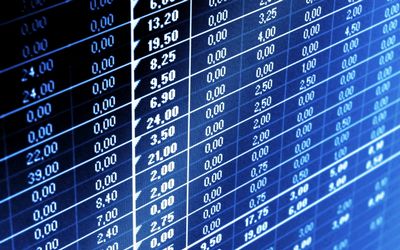How to read the share pages

By Idris Seedat, Manager: CSI at the JSE
The world of investing is made a lot more complicated by the vocabulary used. In this article we look at common but often misunderstood financial information – the share pages that are found in the business sections of many national newspapers. These pages give vital information on companies listed on the JSE as well as many other investments including Kruger Rands, Exchange Traded Funds, preference shares, unit trusts.
Categories The share pages are divided into nine major sectors, all of which have further subheadings. Listed companies are classified into sectors and sub-sectors according to their business activities as a globally accepted system. These sectors and sub-sectors make it fairly straightforward to find any company. For example, you would find company Afrisam listed in the Construction and Building Materials sub sector of the Basic Industries category.
Once you have a general grasp of how the companies and investments are categorized look for the block on the page that is named something like “how to read this table” or “share table guide”. This table contains standardised symbols and what they stand for.
Name simply refers to abbreviated name of the company or investment product listed on the page. To save space, companies are only allowed seven letters for their name. Along with the abbreviated name, some share pages also include a three letter abbreviation for the company. Regular traders become so accustomed to using these abbreviations that they may refer to these instead of the full name of the company.
Close refers to the official share price at which the share’s last trade of the day took place. Shares are always priced in cents in the share pages.
High refers to the highest price that the stock traded for the day
Low refers to the lowest price that the stock traded for the day
12m high This is the highest price that the stock traded at during the past 52 weeks. If you are going to buy a share and it is currently trading near the top of its 52 week range, then you need to be confident of why you think the stock will go up further from here.
12m low This is the lowest price that the stock traded at during the past 52 weeks.
DM stands for Daily Move which represents the difference in the closing price of a stock from one trading day to the next. If the price of the stock increases this will be indicated by a plus sign before the figure and conversely a minus sign signifies a downward movement in price. Some papers include a move in cents or a percentage while others show both.
YM% stands for the last 12 months percentage move, in other words the percentage that the stock has moved up or down in the past year. This column gives investors a general indication of whether the share’s overall trend is up or down.
DY stands for Dividend Yield which is a financial ratio that shows how much a company pays out in dividends each year relative to its share price. Without considering any capital gains that you would receive when selling your stock, the dividend yield is the return on investment for a stock. It is calculated by dividing the annual dividends per share by the price per share. Dividend yield is used as a measurement of the cash flow you receive back for each rand invested. Investors depending on a steady stream of income from their investment portfolio would look at this figure in order to select investments that pay high, stable dividends. For example, if two companies both pay annual dividends of R1 per share, but ABC Company’s stock is trading at R20 while XYZ Company’s stock is trading at R40, then ABC has a dividend yield of 5% while XYZ is only yielding 2.5%. An investor looking to supplement his or her income would likely prefer ABC’s stock over that of XYZ.
PE stands for the price-to-earnings ratio of a stock. This is a measure of price paid for a share relative to the annual net income of profit earned by the company per share. This ratio is used for valuation purposes: a higher P/E ratio means that investors are paying far more for each unit of net income return, so the stock is more expensive compared to one with a lower PE ratio. These so-called units are actually financial years of the company concerned and can be interpreted as the number of years of earning to pay back the purchase price. The P/E ratio is calculated by dividing the price of the stock by the earnings (on a per share basis).
DV refers to Day’s Volume and this column refers to the number of shares in a company that were traded. You will see in the paper that under some columns there will be a dash rather than a number – this is because the share did not trade at all on that particular day. Studying daily volume over a period of time will give an investor an idea of the trading activity or liquidity of a share – which is useful to know as liquid shares are easily sold.
S stands for suspended which means that trading on the share or investment product has been suspended. A halt in trading activity for an extended period of time normally occurs when there is a lack of financial information on the share. Once the JSE suspends a share, shares of that company cannot be traded on the market until the suspension is lifted or lapses. The exact amount of time for the suspension is determined on a case-by-case basis.
Finally, let’s look at the stock market indices. To invest on the stock market, one needs to understand how indices work. In an index, companies with common characteristics are grouped together and index can be seen as a barometer for that group, whether together overall, they are up or down. For example, if overall all 40 companies in the Top40 Index, have had share price movements up throughout the trading day, the index will show an overall movement of up from the previous day’s index value. At a glance, an index gives investors a good idea of how an industry has performed or for example how the top 40 companies listed on the JSE have performed.
Once you’ve cracked the share page code you may want to try your hand at trading shares. Before you actually put any money into the market give virtual trading a go. If you’re a school pupil or university student you may be able to participate in the annual JSE / Liberty Investment Challenge. This is an educational programme that teaches the youth the fundamentals of investment strategy. Learners are required to form teams which are given an imaginary sum of R1 000 000 each to invest in JSE-listed shares. There are great prizes for winning teams including the opportunity to visit a stock exchange in another part of the world. This year marks the 40th anniversary of the challenge.
If you’re not still studying the JSE offers a free simulated trading platform called The JSE’s Virtual Trader which allows you the opportunity to test your investment skills in a safe and risk-free environment. You will be credited with virtual cash and therefore, all profits and losses emanating from your trading activity will remain virtual and therefore you will incur no liability but also will make no real money.
http://schools.jse.co.za or http://university.jse.co.za for more information about the JSE/Liberty Investment Challenge and registration dates for next year.
http://www.jse.co.za/JSEVirtualTrader.aspx to sign up for the JSE Virtual Trader





